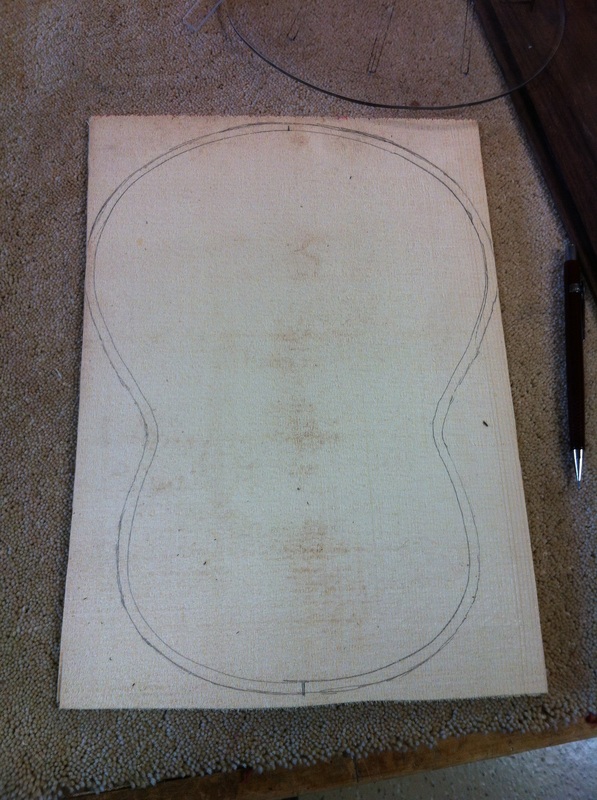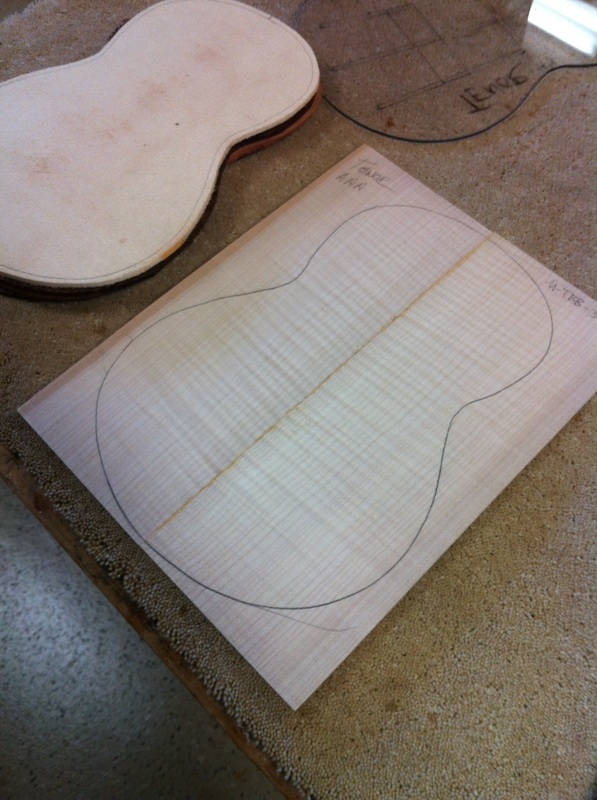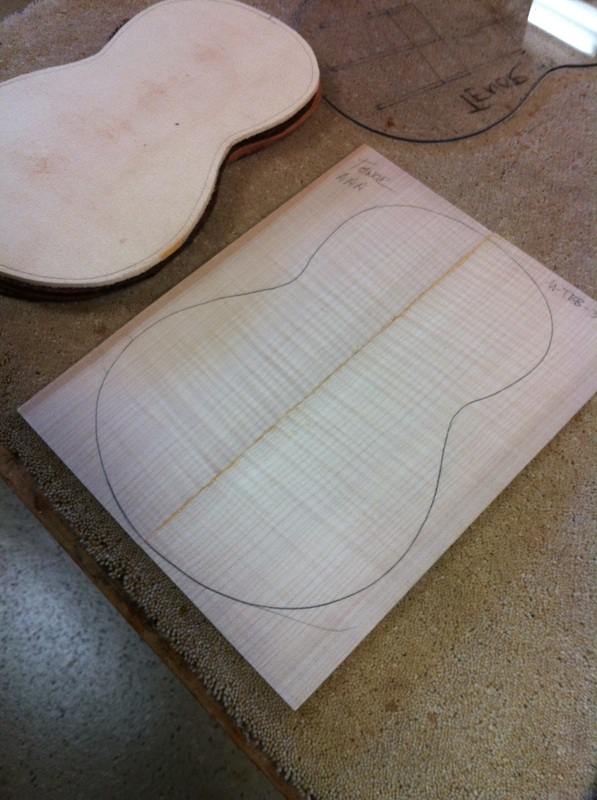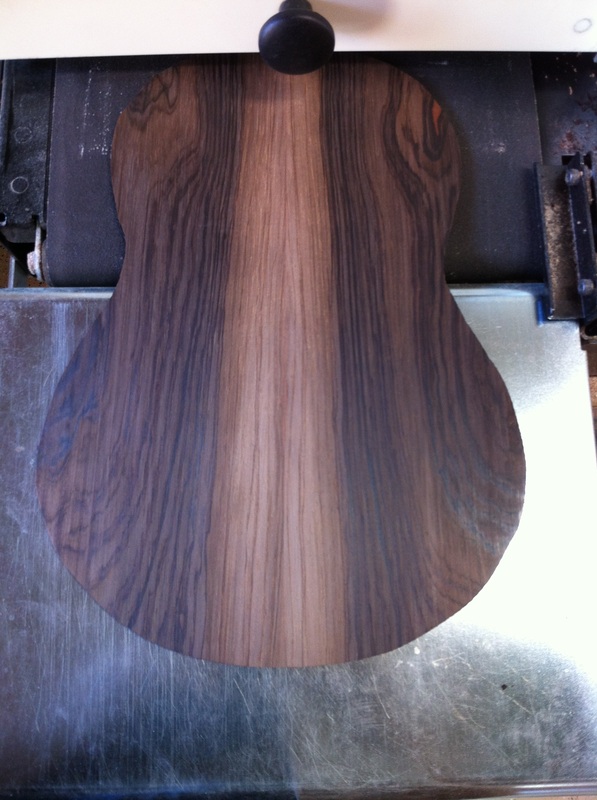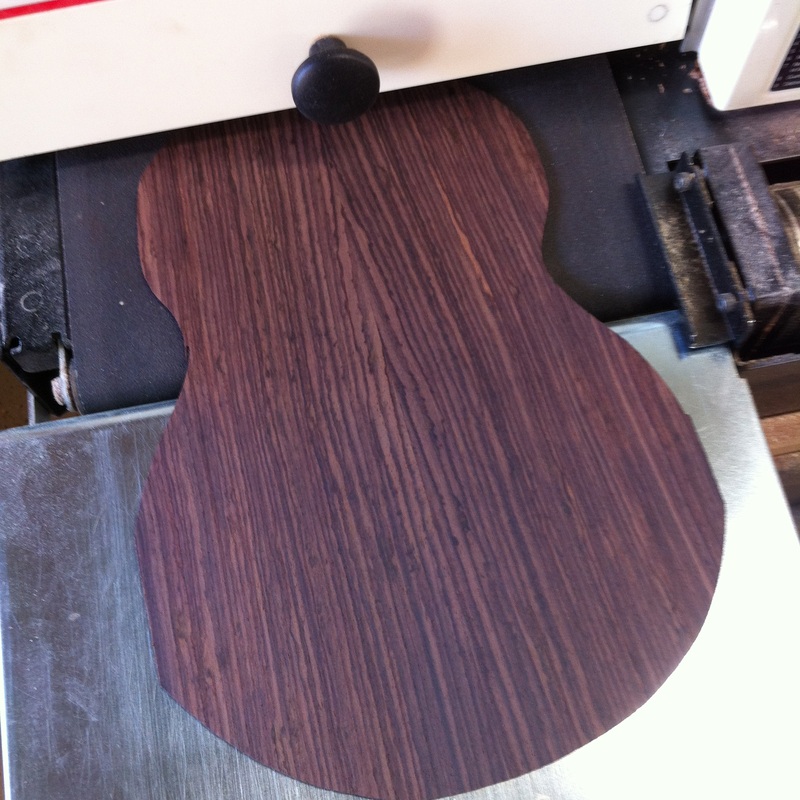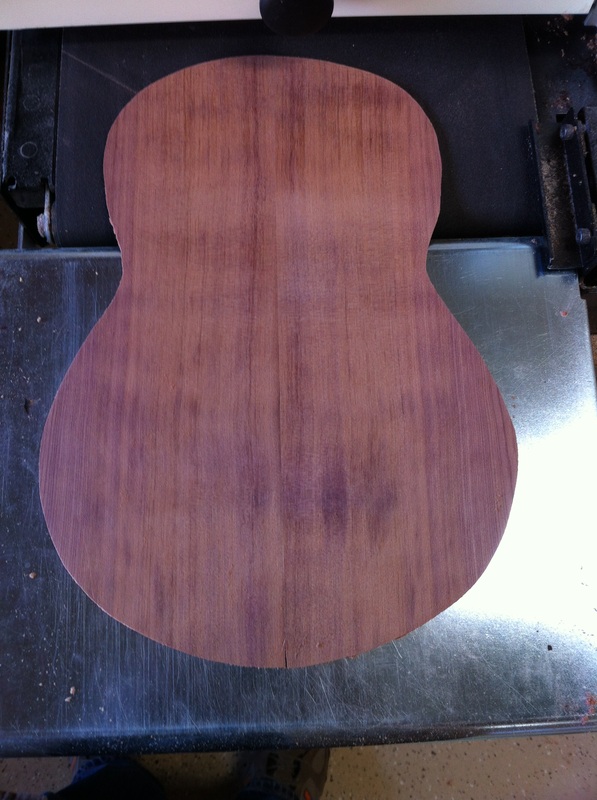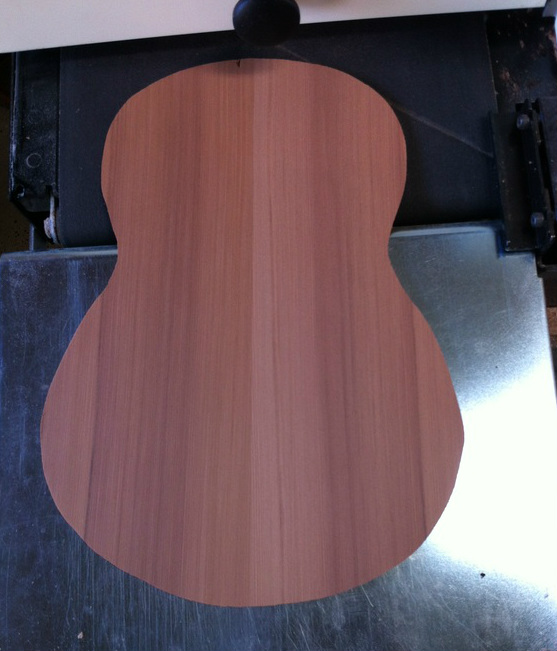THE BACKS AND TWO PIECE TOPS ARE ALL JOINED NOW and I was able to spend the afternoon running them through the thickness sander. Oh my there is some pretty wood in this batch. Just take a look
This Englemann Spruce top is the only top that did not need to be two pieces. I am about to take this to the bandsaw to saw around the outer line. The inner line represents the final shape of the instrument, but you need a little wiggle room on this piece.
Just off the glue rack. Oh my, won't this make a pretty back?
And when you sand it smooth, now it really shows it's beauty. This is the Brazilian Rosewood. Oh, I just love it.
And this is the East Indian Rosewood-amazing stuff. I had never worked with this before. I love it. Paired with redwood it ought to be lovely.
Here is the rare Rocky Mountain Juniper going through the sander. I will count the growth rings with a microscope. I am expecting 700 across the lower bout. That means the tree was at least 350 years old.
This wood is highly aromatic and smells like pencil cedar.
This wood is highly aromatic and smells like pencil cedar.
This is the redwood to go with the East Indian back and sides. To think that this lovely wood used to panel a bathroom in my friend Paul's home. Glad I could save it for a higher purpose. Salvaging wood is a noble practice. I am told that some of the best Brazilian Rosewood comes from beams and joists from old buildings in South America and I know Eric Devine uses some breathtaking redwood salvaged from an old water tank on Maui. anyone know the whereabouts of an old barn made of Koa, or Walnut, or Redwood for that matter.
